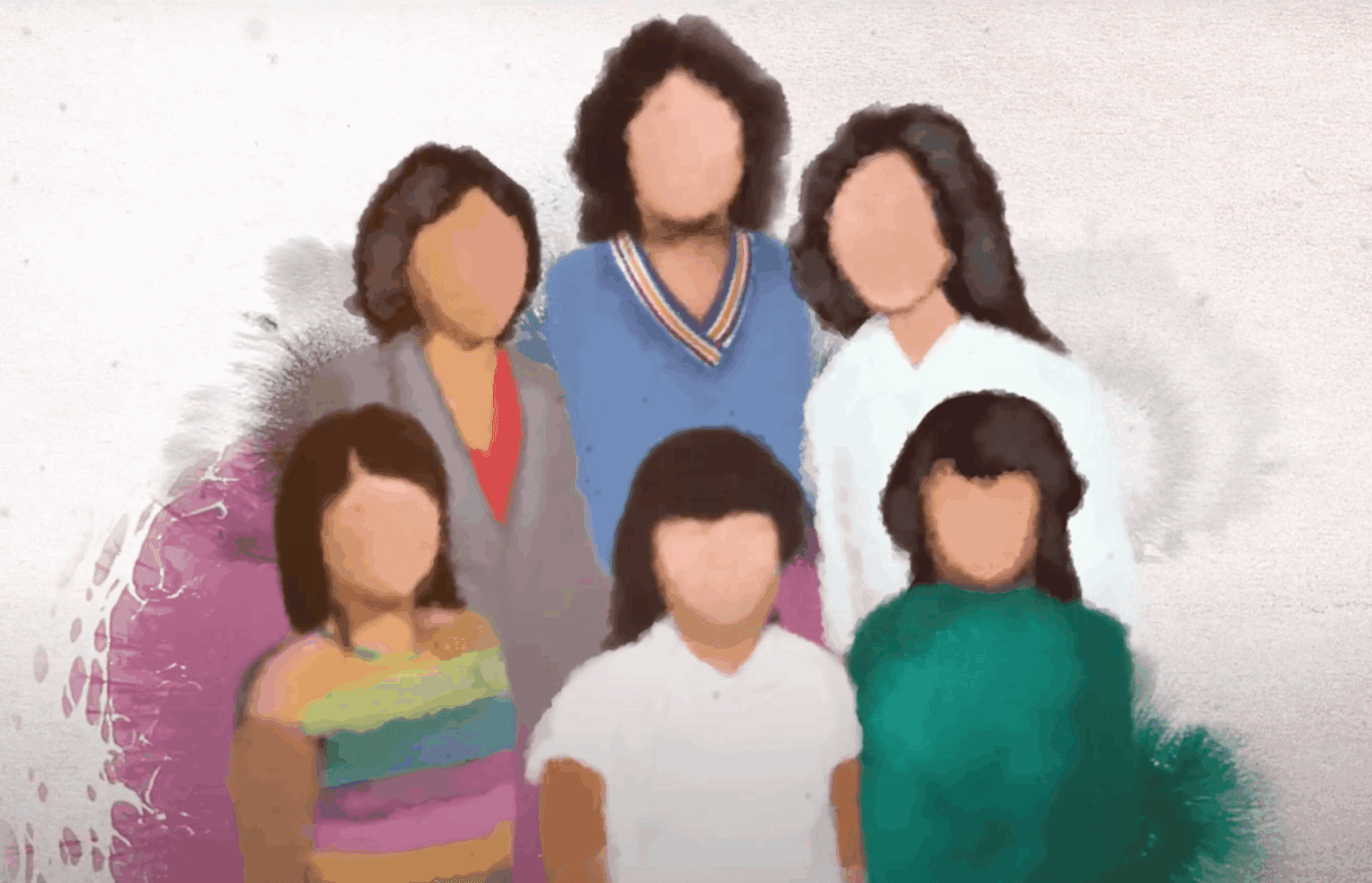Missing persons searches use drones, sonar and scent tracking dogs
Emmy Award goes to animated documentary honoring MMIP
“Who She Is” aims to humanize the women behind the statistics

A still from the documentary “Who She Is” depicts Sheila Hughes’s family portrait. Hughes was murdered in 1996. (Art: Jonathan Thunder)
In 2022, directors and writers Sophie Barksdale and Jordan Dresser released a documentary about missing and murdered Indigenous women from the Wind River Reservation in Wyoming. Their work is still having an impact three years later
“Who She Is” by Caldera Productions has been playing as part of a film festival in cities across the country, gaining national recognition and, in July, winning a Heartland Chapter Emmy Award for best cultural documentary. The stories of the women inspired locals to pick up the phone and call legislators, advocating for the return of the Not One More Report, which was removed from the U.S. Justice Department’s website this year.
The directors used animation to tell the story, unusual in documentaries. Native artist Jonathan Thunder, who is part of the Red Lake Band of Ojibwe, used watercolor to create beautiful swirls and color palettes unique to each woman.
“We wanted something that felt alive and had motion and was beautiful,” Barksdale said. “With the watercolor, it’s very feminine, the way it shifts and changes and the water can drop from one frame to the next and lead you down the stream of the story. Water is important to life, and we wanted to make those connections to the vibrancy of life.”
Abbi Washaki, Sheila Hughes, Jocelyn Watt and Lela C’Hair’s stories are told in first person, voiced by family members. Washaki’s murder case is closed, Hughes’s murder is a cold case and Watt’s murder case is ongoing. C’Hair is the only woman in the film who is still alive. She voiced herself
The film is bookended by a jingle dress dancer performing a dance of healing. The dancer also appears after each woman’s story. Viewers don’t see her face until the end, when she lifts her head to show “Who She Is.”
The goal of the film is to humanize the women behind the statistics. To the directors, this comes in the form of storytelling. It is hard for people to relate to a statistic. But by sharing the women’s hardships, the things they loved, their contributions and goals, they are remembered for who they are, not what happened to them.
“Who she is is not how she left this earth, that’s not how people should remember her,” Barksdale said. “We feel strongly about that and want other people to feel strongly about it too.”
Barksdale said advocacy for MMIP may be recent, but families have been affected for generations.
“Just because the (MMIP) hashtag is new doesn’t mean this epidemic is new.” This has been impacting families forever, really since colonization,” Barksdale said.
The funding for the film project, which took three years to create, came from the Wyoming Division of Victim Services through the Wyoming Task Force. The film is showing across the U.S. and also on PBS. People can visit the filmmakers’ website to organize community screenings.
“It’s a gift back to the families,” Barksdale said. “Film is forever, and these women are forever.”
Jolan Kruse
Report for America corps member and the Missing and Murdered Indigenous Peoples reporter at Buffalo’s Fire.
Location: Bismarck, North Dakota
See the journalist pageThis article is included in our Story Share & Care selection. We invite you to republish the content, with proper attribution to the author/s and to Buffalo's Fire. Please see our content sharing guidelines.


Efforts to find Wesley Dixon Jones entailed new technology; coordinator plans to search again before weather worsens
The 20-year-old citizen disappeared Nov. 1
Volunteers join law enforcement to search by foot, boat and horseback
Searchers will test out new apparatus in Oregon
The Spirit Lake Tribe and the Standing Rock Sioux Tribe say several key programs will be affected







